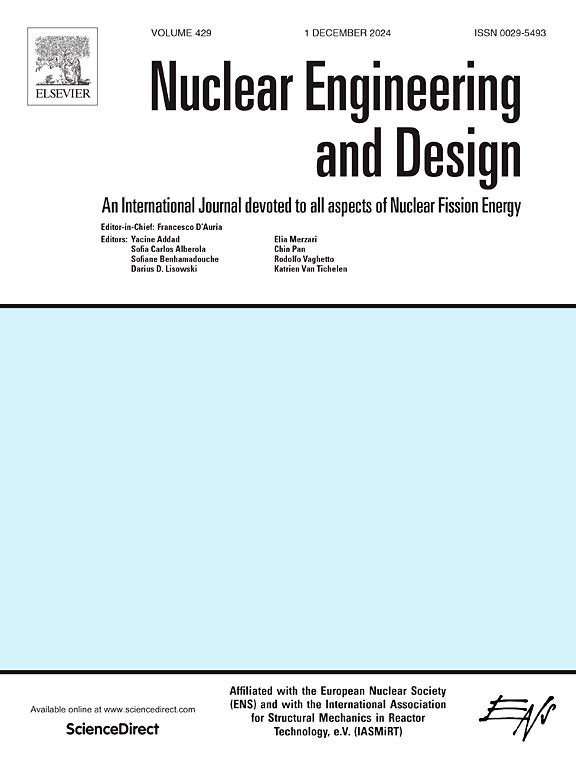Effective thermal conductivity prediction of dispersion nuclear fuel elements based on deep learning and property-oriented inverse design
IF 1.9
3区 工程技术
Q1 NUCLEAR SCIENCE & TECHNOLOGY
引用次数: 0
Abstract
The in-pile thermal performance of dispersion nuclear fuel elements is crucial for reactor safety. The uncertainty of the thermal conduction throughout dispersion fuel is primarily influenced by the nonuniform distribution of fuel particles in the meat, especially the agglomeration behavior of fuel particles. In this paper, a new method has been developed for the rapid and accurate prediction of the effective thermal conductivity (ETC) of dispersion nuclear fuel elements based on the deep learning method. A deep learning model is trained to establish an implicit correlation between the microstructure of dispersion nuclear fuel elements and their ETC, enabling a predictive model to estimate ETC from two-dimensional microstructural diagrams. The dataset is generated using the finite element method, which takes into account the nonuniform distribution characteristic of fuel particles. The microstructures which affect the decision-making of the predictive model are demonstrated by the saliency map. Based on the predictive model, an inverse design method of the distribution of fuel particles was conducted for the specific ETC by metaheuristic algorithms. This study confirms the feasibility of directly evaluating ETC from microstructural images and provides a property-oriented inverse design method for the meat microstructure.
求助全文
约1分钟内获得全文
求助全文
来源期刊

Nuclear Engineering and Design
工程技术-核科学技术
CiteScore
3.40
自引率
11.80%
发文量
377
审稿时长
5 months
期刊介绍:
Nuclear Engineering and Design covers the wide range of disciplines involved in the engineering, design, safety and construction of nuclear fission reactors. The Editors welcome papers both on applied and innovative aspects and developments in nuclear science and technology.
Fundamentals of Reactor Design include:
• Thermal-Hydraulics and Core Physics
• Safety Analysis, Risk Assessment (PSA)
• Structural and Mechanical Engineering
• Materials Science
• Fuel Behavior and Design
• Structural Plant Design
• Engineering of Reactor Components
• Experiments
Aspects beyond fundamentals of Reactor Design covered:
• Accident Mitigation Measures
• Reactor Control Systems
• Licensing Issues
• Safeguard Engineering
• Economy of Plants
• Reprocessing / Waste Disposal
• Applications of Nuclear Energy
• Maintenance
• Decommissioning
Papers on new reactor ideas and developments (Generation IV reactors) such as inherently safe modular HTRs, High Performance LWRs/HWRs and LMFBs/GFR will be considered; Actinide Burners, Accelerator Driven Systems, Energy Amplifiers and other special designs of power and research reactors and their applications are also encouraged.
 求助内容:
求助内容: 应助结果提醒方式:
应助结果提醒方式:


